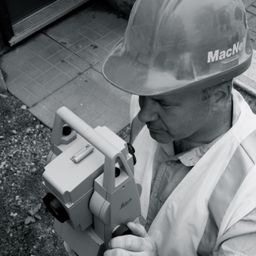Canvasing the Window and Door Caps
My Session Status
The sails that converted the prevailing winds of Atlantic Canada into a force of propulsion for both small inshore fishing boats and larger offshore schooners were economically fashioned from a strong, coarse, unbleached cloth made from hemp, flax, or a similar yarn.
To the once prosperous east coast communities and fishing fleets canvas cloth was more than the material from which their sails were constructed. It was used for roof surfaces of very slight pitch subjected to severe weather and wear, lining valleys and gutters, for window and door flashings and for such places as floors of kitchens, laundries, porches and balconies and for canvassing plaster walls. The earlier fishing and wooden ship building industries provided a canvas testing ground and a confidence in the use of the material as a weather resistant membrane.
Canvas is light in weight, easy to lay, durable, clean and resistant to decay. It will not crack like sheet metal not tear like felt, if walked upon. A coat of linseed oil paint can easily recondition it. The flexibility of canvas made it suitable for the decks of boats, roofing railway cars, and the covering of early aircraft fuselages and wings, all subject to vibration in use. Although the importance of canvas for global trade and transport has diminished many of its former uses and applications are still viable.
Unlike the roll formed metal and plastic sheet goods that replaced it as a building material on traditional framed buildings canvas does not require annealing, descaling, temper rolling, brake forming, roll forming, press forming, or thermal forming. Canvas it is not subject to thermal expansion, thermal conductivity, corrosion, electrolytic action, and is compatible with most traditional materials. The basic ingredients of canvas are hemp, flax, and yarns, all of which are sustainable materials in their own right, naturally biodegradable, not petroleum-based or prone to obsolescence.
With the introduction in 1908 of reliable internal combustion engines such as the Atlantic two-cycle engine, reliance on canvas in coastal communities diminished. Internal combustion engines like other advances in science and technology were welcomed as a part of a larger pattern of progress.
New technologies and materials while often held out to be “better than anything ever seen before” frequently prove to be “not quite as good as anything ever seen before”. Canvas membranes are a timely reminder that traditional materials will outlast many newer more advanced ones with a much smaller carbon footprint.
The author has researched the use of canvas flashing and roofing membranes found along the Nova Scotia coastline. He has installed canvas window and door flashings with tools traditionally used by local people in the application of canvas and whose livelihood depended on maintain- ing coastal vessels and wooden buildings.
This paper will focus on the simple installation of canvas flashings over windows and doors in combination with traditional shingles and beveled siding. It will provide the basic knowledge for a wide variety of canvas membrane applications and a general knowledge of the material for restoration purposes. Canvas window and door flashings have a proven service life in excess of 150 years in harsh coastal climates. When properly installed on boat decks with casein glues, canvas membranes have a service life of 25 years.
Topics addressed will include but not be limited to the traditional “wood shingle kerfing” procedures required for window and door canvas cap flashing, selection and preparation of 16oz to 24oz canvas, material layout, hand tools, traditional and modern fasteners, water-resistant casein glues, and traditional paints including locally obtained fish oil paint and the onsite preparation of the paint itself.
Canvas membranes are a timely reminder that traditional materials will often outlast many newer more advanced ones. Canvas is just as viable and cost effective today as it was 150 years ago.
